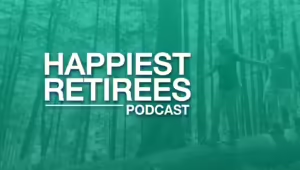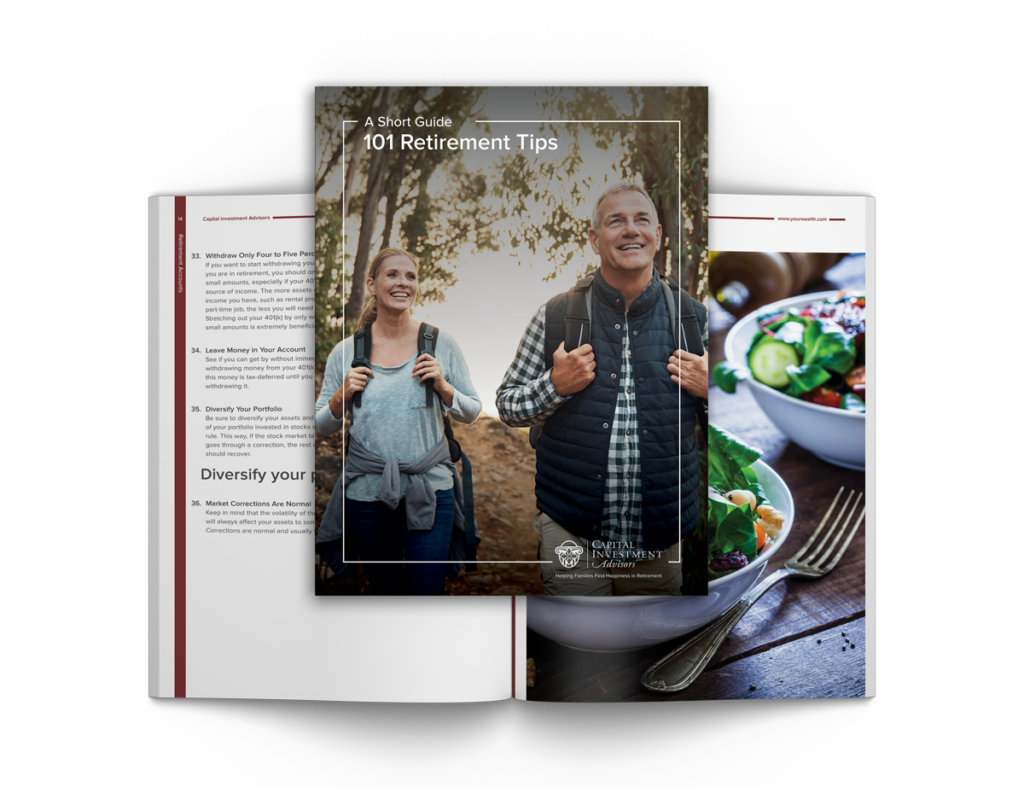Your retirement years are fertile ground for you to spend time doing the things you love best. I call these happy endeavors core pursuits. And, based on the research for my book, You Can Retire Sooner Than You Think, I’ve found that the retirees who are the happiest enjoy an average of 3.5 core pursuits. (The least happy lot have an average of 1.9.)
Now, not everyone’s core pursuits are the same – some may prefer gardening to golf. But there is one that tops the list of what retirees love to do, and that’s volunteering. Overall, adults over the age of 55 make up 25% of the volunteer workforce annually. That may be because of the rich social, mental and physical benefits of volunteering. Giving back is a great way to spend time during your Golden Years.
If you’d like to get involved in the broader community, take a look at this top-ten list of ways you can lend a helping hand. It just might spark your interest to get involved in a new cause that will generate even more joy and fulfillment in your life.
1. Tap Your Professional Skills
You’ve spent your career amassing professional skills. Why not put them to work through volunteering? No problem. From accounting to marketing to information-technology, there’s likely some nonprofit or other organization out there that would love to have your help and experience.
2. Use Your Trade Skills
Are you handy? Maybe you’re experienced with electrical work, carpentry or landscaping. If so, consider volunteering where you can put your trade knowledge to good use. These skills are in need at a variety of places. While Habitat for Humanity is a wonderful cause, this isn’t the only organization that could use you. Almost every nonprofit has a physical space, and many have complex operational needs. Why not lend a helping hand?
3. Let Your Creative Energy Flow
We’re looking at you photographers, writers, painters, drawers and musicians. There’s likely a nonprofit near you that could use your help. As one example, the National Park Service often seeks photographers and graphic designers to help promote their parks online. Many other nonprofits are looking for folks to help them update their sites through fresh content, or maybe a new logo. More and more cities are including artist projects to make neighborhoods more vibrant. And, during the warmer months, a variety of festivals take place across the country looking for live music performers.
4. Become a Member of a Board
If you are looking for broad, communitywide impact, then consider joining the board where you have a passion for their mission. Board members help shepherd the organizational development of nonprofits. These roles can be especially rewarding for those seeking community and social change. These positions may be difficult to find online, so try identifying your perfect nonprofit first, and then inquire as to how they recruit for board members.
5. Help People with Their Taxes
When tax season rolls around, some people break out in a cold sweat. Completing and filing taxes is an in-depth process that takes knowledge and skill. A little expertise goes a long way to help people breathe a sigh of relief. The AARP Foundation Tax-Aide has been working with volunteers since 1968. Now, it helps about 2.6 million taxpayers every year. If you want to help clients with their tax preparation, consider going online and looking for opportunities in your area on the Tax-Aide website.
6. Get Outdoors
There’s nothing like being in nature and taking in the beauty and fresh air. Almost 250,000 people volunteered for the National Park Service in 2011, and more than half were age 62 or older. You could find yourself leading bird-watching and wildflower walks. Or, you could choose to spend a summer-long trip as a campground host, where you’ll receive a free RV hookup site and a small stipend for your service. Positions may be posted on Volunteer.gov. Also consider contacting a park’s volunteer coordinator directly, whose information is typically listed on the park’s website.
Not near a National Park? Outdoor volunteer opportunities still abound. Think about picking up litter and removing invasive plants at a local park or nature trail. This type of volunteer work is good for you physically, and a job well-done beautifies your community.
7. Consider Tutoring
Helping a student learn to read, do math or learn another language is a way to make a lifelong impression on the child and their education. The AARP Experience Corps pairs people aged 50-plus with teachers (between kindergarten through third-grade classrooms) to help kids learn. You could opt for either one-on-one tutoring or a group setting. Another option is Senior Corps. Depending on your community, you could work with special-needs children or kids on a military base school.
8. Help an Elderly Individual
Tap your inner caregiver. Senior Corps administers a Senior Companion program that connects people 55 or older with elderly individuals. This program enables thee individuals, who may have health problems, to continue to live independently. Volunteers may help their clients with things like filling out paperwork or grocery shopping, or they just spend some social time together.
9. Spend Time with Animals
I’m looking at you, dog- and cat-lovers. Animal shelters need you, whether to foster a pet, help care for shelter animals at the shelter or any other variety of tasks. You can contact a local shelter or check out listings on VolunteerMatch and elsewhere.
10. Do Your Own Thing
As a Baby Boomer, you’re a natural trailblazer. Use this energy to create your own volunteer opportunity. Resources on how to get started are available on AARP’s Create the Good site. There you’ll find how-to guides on a variety of topics. Or, simply dig deep on your own to find your perfect match.
There are myriad opportunities out there. Why not take advantage of one (or a few)? They’ll no doubt bring positive benefits to your community. And, in the process, you’ll become a part of a greater community of volunteers. And, who knows? Maybe you’ll find a new core pursuit along the way!
Read original article here
DISCLOSURE
This information is provided to you as a resource for informational purposes only and should not be viewed as investment advice or recommendations. This information is being presented without consideration of the investment objectives, risk tolerance, or financial circumstances of any specific investor and might not be suitable for all investors. This information is not intended to, and should not, form a primary basis for any investment decision that you may make. Always consult your own legal, tax, or investment adviser before making any investment/tax/estate/financial planning considerations or decisions.










